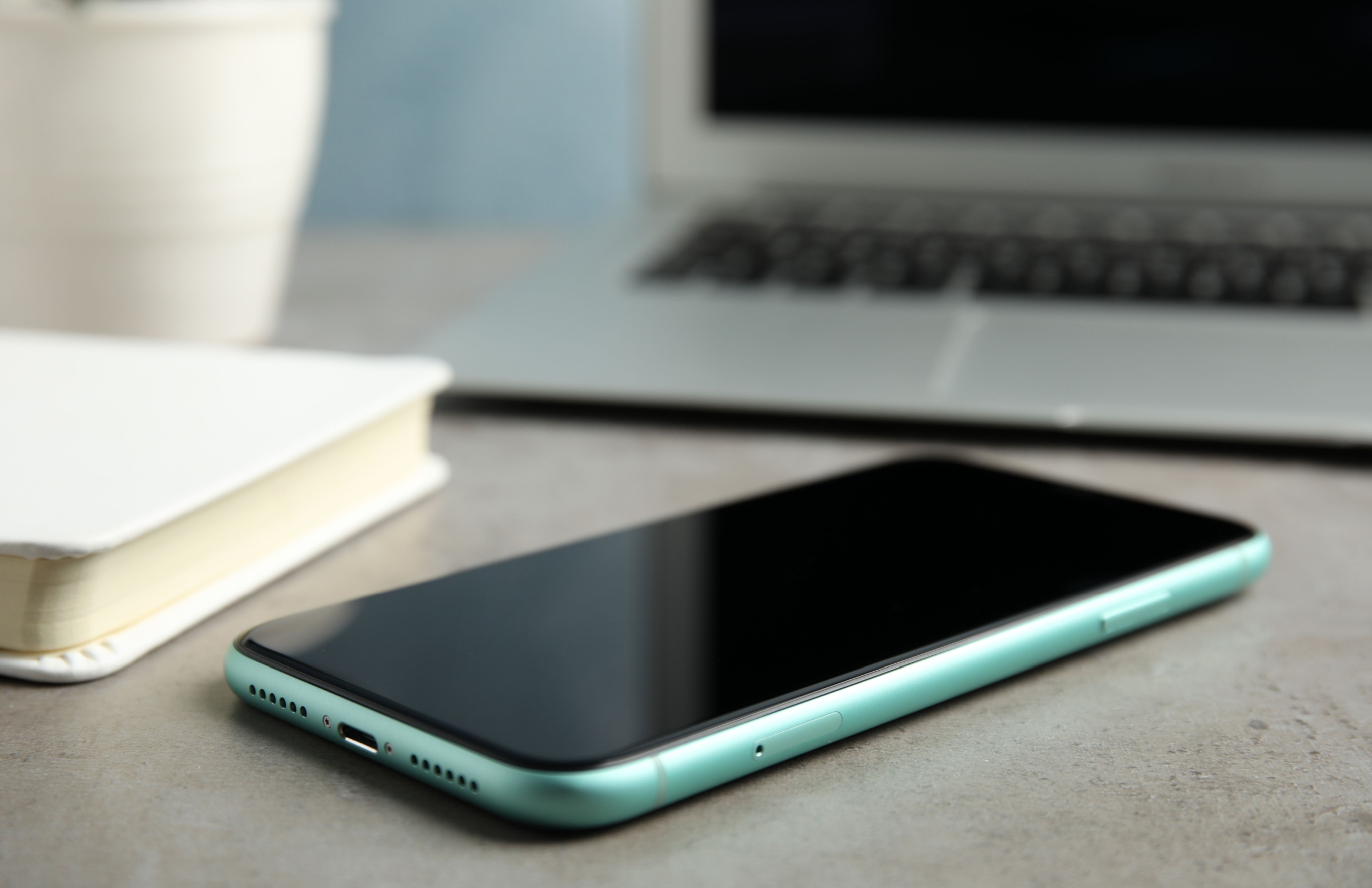Cellphones have only been part of our lives for a few decades, yet they have become indispensable tools for everything from paying bills to streaming videos. However, their convenience comes with controversy as concerns rise over the effects of the radiofrequency radiation (RFR) they emit.
While health organizations say this non-ionizing radiation is harmless, a recent study, which the authors describe as the first controlled human intervention trial examining the cytotoxic effects of cellphone radiation, suggests that prolonged exposure may damage human cells.
The Cancer Controversy
For cellphones to work their magic—transmitting conversations and data without wires—they are designed to emit a field of RFR. This is the same microwave radiation that powers radar systems and microwave ovens, although cellphones broadcast at a much lower intensity.
The controversy is whether our regular exposure to cellphone RFR causes harm. Despite many studies that show cause for concern, health experts have repeatedly stated that the amount of non-ionizing radiation that cellphones broadcast is harmless.
According to the National Institutes of Health, “the only consistently recognized biological effect of radiofrequency radiation absorption in humans that the general public might encounter is heating to the area of the body where a cellphone is held (e.g., the ear and head). However, that heating is not sufficient to measurably increase core body temperature. There are no other clearly established dangerous health effects on the human body from radiofrequency radiation.”
However, several human studies indicate that mobile phone-specific electromagnetic fields may cause cancer. Based on this evidence, in May 2011, a committee for the World Health Organization’s International Agency for Research on Cancer (IARC) determined that cellphone radiation is “a possible human carcinogen.”
A detailed report on the subject published by the IARC in Lancet Oncology in 2013 highlighted the “potential for an increased risk of cancer among those exposed to RF radiation.” However, the report did not quantify any specific cancer risk or any other health risks linked to cellphone radiation.
The New Evidence
A 2024
study published in Environmental Research shows evidence of cell toxicity linked to cellphone radiation, leading scientists to ponder its potential long-term health implications.
For two hours a day over five consecutive days, 41 participants in the study wore headsets that broadcast a third-generation mobile cellular signal (commonly known as 3G—a network standard that has been around since 2001 because it enables a wireless internet connection). Exposure to the signal was randomly assigned to one side of the head.
Before the trial and three weeks after the exposure, scientists collected cells from the cheeks on both sides of each subject’s head.
On the side of the head exposed to the 3G radiation, researchers found a significant increase of binucleated cells (cells formed as a consequence of disturbed cell divisions) and evidence of cell death. No such effects were observed in cells from the side of the head that was not exposed to the 3G signal.
Researchers say the study is significant because it is the first controlled human intervention trial examining the cytotoxic effects of cellphone radiation (previous research measured effects on mice).
Researchers point to accumulating evidence that exposure to RFR is associated with specific brain tumors. Their results indicate that molecular mechanisms other than chromosomal damage may cause cell damage, a key factor in the development of cancer. The researchers posit that the results they observed may be due to either an inflammatory response or the release of free radicals.
The Epoch Times contacted the U.S. Food and Drug Administration (FDA) to see how consumers should consider this research. FDA press officer Jim McKinney responded in an email, “The FDA does not comment on specific studies, but evaluates them as part of the body of evidence to further our understanding about a particular issue and assist in our mission to protect public health.”
A spokesperson for the IARC said they had no one available to comment.
The Federal Communications Commission did not offer a reply by press time.
Experts Divided
Since the IARC’s evaluation of cellphone radiation as a potential cause of cancer more than a decade ago, the agency has been repeatedly urged by its scientific panel to examine newly available research. In
2019 and again
this year, the scientific panel advising the IARC suggested that studying cancer risks associated with cellphone radiation should be “high priority.”
Credible scientific review takes time and money, and IARC has stated that it has higher priorities to focus on with its limited resources. The list of subjects IARC hopes to address includes examining the cancer-causing potential of acetaminophen and hair dyes.
Major US Study Links Cellphone Radiation to Cancer in Rats
The push for IARC to reexamine RF radiation comes in large part from a major study from the U.S. government. In 2018, the final report of a $30 million, 10-year study funded by the FDA and conducted by the National Toxicology Program (NTP)—the federal agency tasked with testing toxins—showed “clear evidence of cancer and DNA damage” linked to cellphone use in male rats.
The study looked at both 2G and 3G radiation. It revealed an association with malignant tumors in the hearts and brains of male rats, as well as some evidence of an association with tumors in the adrenal glands of male rats.
What does this mean for the average human with a smartphone?
In a February 2023 statement outlining its report, the NTP stated that findings in animals cannot be directly applied to humans for two key reasons:
- The exposure levels were greater than what people may receive from cellphones.
- Rats were exposed to radiofrequency radiation across their whole bodies, which is different from a person carrying a cellphone in their pocket or using it next to their head.
However, NTP researchers noted that their study calls into question “the long-held assumption that RFR is of no concern as long as the energy level is low and does not significantly heat the tissues.”
A new RFR exposure study was in development that was supposed to evaluate whether RFR exposure causes DNA damage. In January, the NTP announced that it had canceled the study.
“The research using this small-scale RFR exposure system was technically challenging and more resource intensive than expected,” it stated at the time.
FDA Casts Doubt on NTP Study
Regulators have also questioned the NTP study’s conclusion. An
article by the FDA, current as of May, notes that:
- Unlike human cellphone users, rats in the NTP study received radiation over their entire bodies.
- Rats also received this whole-body radiation for nine hours per day for their entire lives.
According to the article, the rats received radiation levels up to “75 times higher than the whole-body exposure limit for people.” The FDA notes that the study found “no health effects on female rats or mice (both male and female) exposed to these extreme conditions that passed a test for statistical significance.” Finally, despite the tumors, exposed rats lived longer than their control group counterparts.
The FDA also noted that cancer rates in the United States haven’t increased despite widespread cellphone use over the past 30 years. In fact, brain and nervous system cancer rates have actually decreased between 2002 and 2019, according to the FDA, which cited Pew Research Center estimates.
A review of cellphone radiation epidemiological studies, published online in the September edition of the journal Environment International, stated that “exposure to RF from mobile phone use likely does not increase the risk of brain cancer.” The review was commissioned by the WHO’s Electromagnetic Field (EMF) project, an international effort to assess the health and environmental concerns related to EMF exposure.
Push for a Follow Up
A push for a follow-up NTP study persists.
The International Commission on Non-Ionizing Radiation Protection in 2018 recommended further validation to clarify the NTP’s results.
In 2022, researchers from South Korea and Japan announced they were working on an investigation to verify the NTP study. They outlined their plans: a five-year collaborative animal project investigation of mobile phone carcinogenesis to verify the NTP study.
“There are always experimental uncertainties in in vivo studies of live animals, and definitive conclusions cannot be drawn from a single trial, regardless of its scale,” the researchers wrote. “Moreover, animal studies with poor reproducibility cannot be considered objective scientific evidence.”














